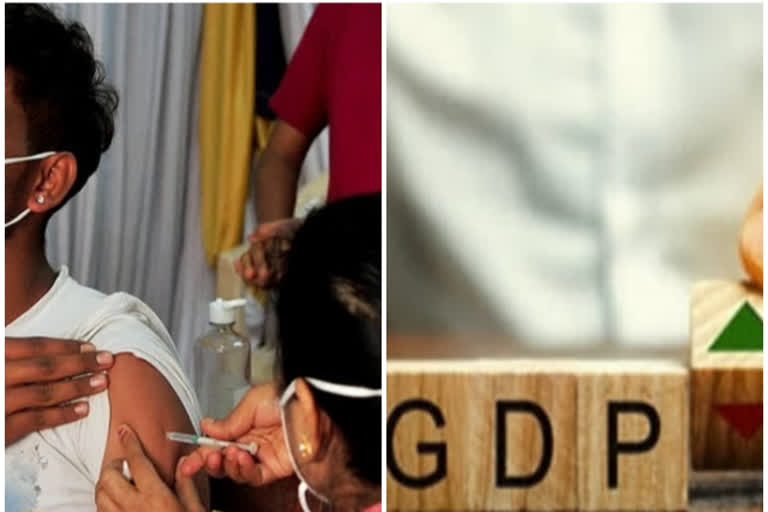New Delhi: India is expected to achieve the world record of administering one billion doses of Covid vaccines in this month but that may not be enough to return the country to the path of high GDP growth which only looks possible from July next year onwards when 80% population will be fully vaccinated, said a report by Oxford Economics.
According to the report, which analyses India’s vaccination trends and frequent economic indicators such as the data from Reserve Bank’s current and future customer confidence surveys, Purchasing Managers’ Index (PMI) data, industrial production and mobility data among others, India’s GDP growth will be muted for the next 8-9 months.
“We still think India’s recovery will be subdued in the second half of 2021 (July-December), despite a significant pick-up in vaccinations from August,” Priyanka Kishore, Head of India and South Asia Economics at Oxford Economics, said in the report. The deadly Sars-CoV-2 virus has killed more than 4,50,000 people in India and more than 4.8 million people worldwide. It also caused a decline of more than 7% in India’s GDP in the last fiscal.
Why would GDP growth remain subdued?
There are several reasons for it. The report says that the recent uptick in vaccination is mostly first doses and it will take time for the second doses to be administered as India’s main anti-Covid vaccine Covishield has a gap of 12-16 weeks between the two doses as per the government policy.
According to the think tank’s estimate, around 40% of the population will be fully vaccinated by December and 70% will be vaccinated by March next year. “This should provide a strong fillip to sentiment early next year and spur consumption,” Priyanka Kishore said in the report.
She, however, warns that in the short term the relatively low proportion of fully vaccinated people will likely keep consumers cautious and constrain the recovery in services and manufacturing.
Mobility, electricity consumption improvement not enough
The researchers also looked at the aggregate Google mobility data at the national level which jumped from -50.5 at the start of May this year when a second devastating wave was ravaging the country. The index jumped to 4.5 at the end of September when there were very few restrictions on movement across states.
Also, electricity demand accelerated to 17.4% in August on a year-on-year basis from 6.3% in May. The manufacturing PMI improved also significantly to come back into the expansionary zone from July after the second wave peaked in June this year.
Despite improvement in mobility, electricity consumption and PMI indices, not all the sectors of the economy are doing well, particularly services and contact intensive services such as tourism and hospitality remained weak in comparison with manufacturing sectors.
“Even within manufacturing, capital and infrastructure industries are doing better than consumer goods partly due to supply bottlenecks, but also because of the persistent threat of a third Covid wave,” Kishore said.
Reopening poses fresh challenges
The pace of reopening by Indian states worried the researchers as it may lead to rising Covid cases as it was seen in Kerala. The second worry is that States have been relaxing restrictions based on Covid metrics rather than the pace of vaccination.
“This risks potential flare-ups of infections that may require re-tightening of restrictions, as evidenced in Kerala. There, a surge in infections in the run-up to the August Onam festival led the state government to re-impose some Covid measures to contain the outbreak,” Priyanka Kishore said.
Recent spike in vaccination may not be enough
